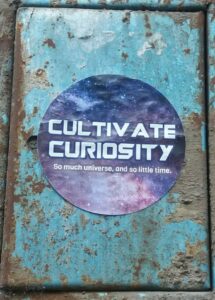
I find it quite timely that we have just had a lecture on learning design as the BC Provincial Government announces the planned return to face-to-face learning for post-secondary institutions in the fall. As a member to the UVic Education “Zoom Cohort”, it feels like a bit of a slap in the face to our educational experience. Almost like, “Thank god that is over, now we can get back to normal learning!”.
Who is to say that our online learning experience couldn’t be normal moving forward? Would I have chosen a 100% online program if given another option, probably not, but it might be the best choice for the person in the next zoom square over. Why not let learners at least have the choice and allow them the agency to choose what is the best learning modality for them?
Face to face learning and online learning have traditionally been thought of as two separate entities. In today’s tech saturated world, there is no reason why the two of these can’t be blended together to create a multi-access learning experience. It was suggested in lecture that most students prefer this model, so how do educators take their pedagogy and make it flexibly for different learning modalities?
This pandemic has been a long road for everyone, and the whole world is ready to get back to “normal”, but what does that look like in education moving forward? In our PDP cohort being online has allowed for colleagues to be apart of the program from their home communities throughout the province. The cost of moving, lack of available accomodation, or the unavailability of desired programs in a local area are just a few of the barriers that could prevent an individual from pursuing their goals. By creating more flexible modalities for learning, those barriers start to break down. Personal circumstances may change part way through a program, if there was the option for a student to continue in their program through a multi-access modality (online synchronous and asynchronous, open resources, face to face) they could continue with their learning with less disruption in a way that works for them. I am very interested in a particular masters program and UBC, but the full-time face to face delivery model is a barrier for me at the moment. If that program was to offer a multi-access design, I would apply in a heartbeat.
All of this thinking can also be applied to the K-12 model. While the needs, and therefore the design might look different in an elementary, middle, or high school, the principles are the same. Learner’s voice and choice has a space in learning design. Having said all of that, how do I as a pre-service teacher begin to design for flexibility? That is a really big question, and at the moment, I don’t have the answer.
Photo by John Schnobrich on Unsplash
 The past few lectures we have had the pleasure of learning from 2 inspiring educators both currently teaching in Victoria. Jeff Hopkins is the principal of the
The past few lectures we have had the pleasure of learning from 2 inspiring educators both currently teaching in Victoria. Jeff Hopkins is the principal of the